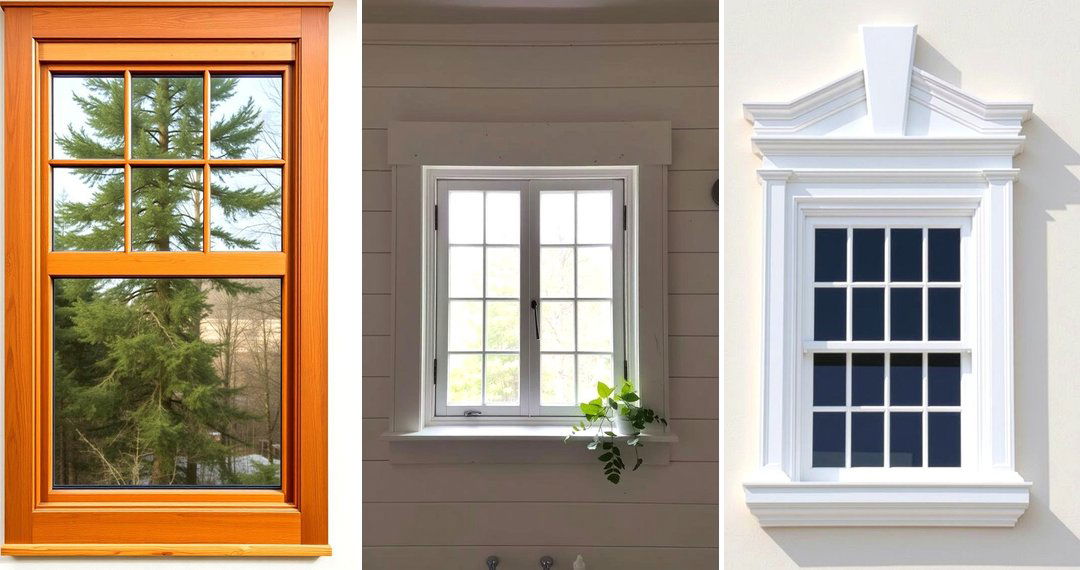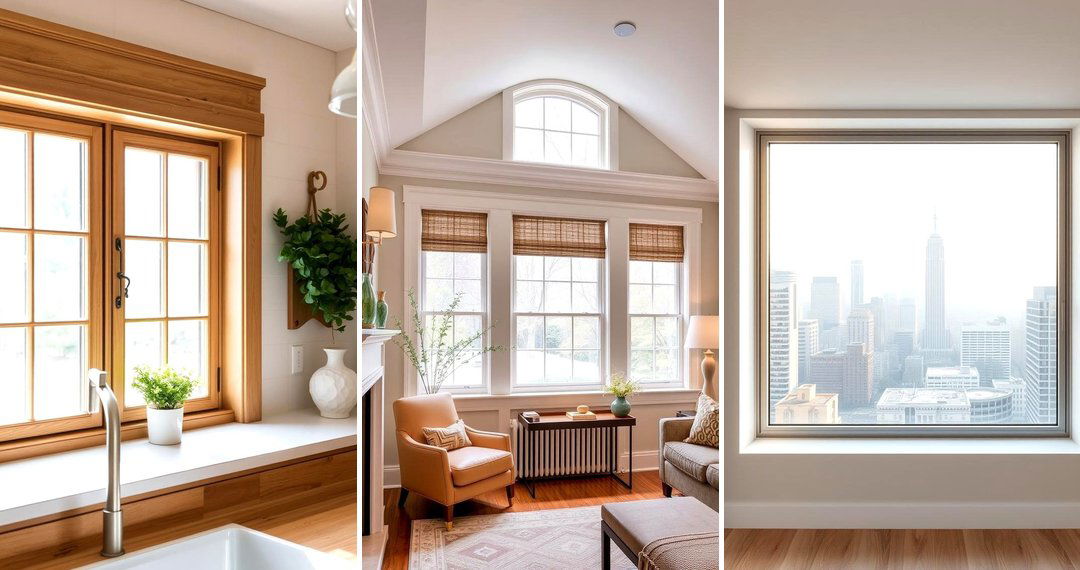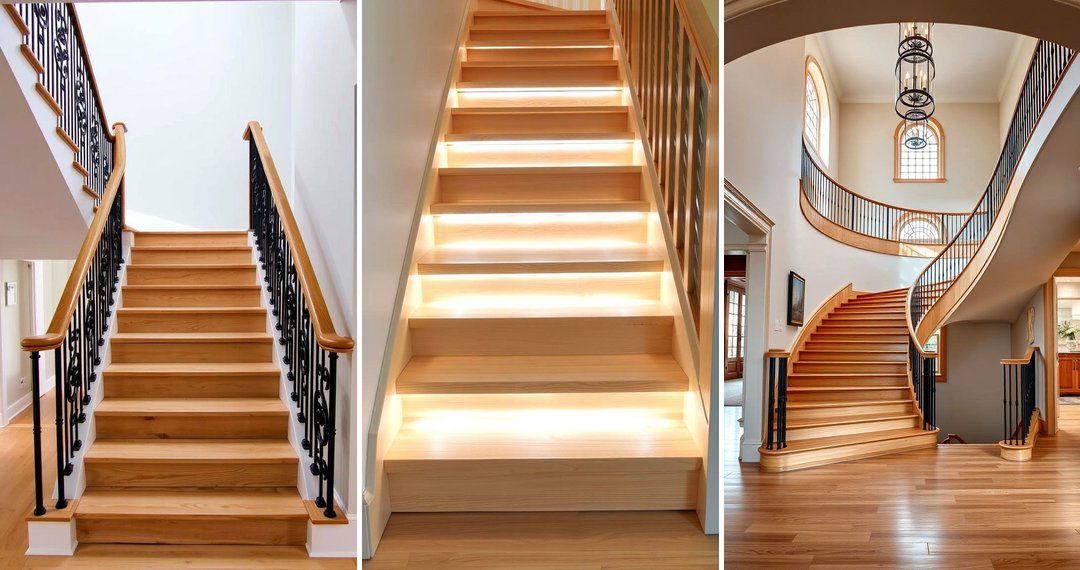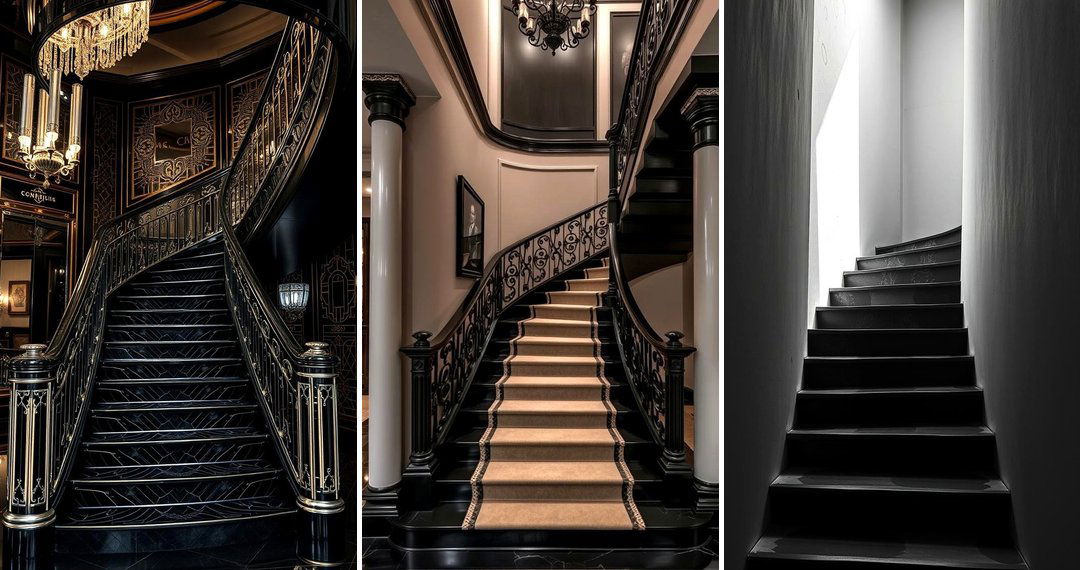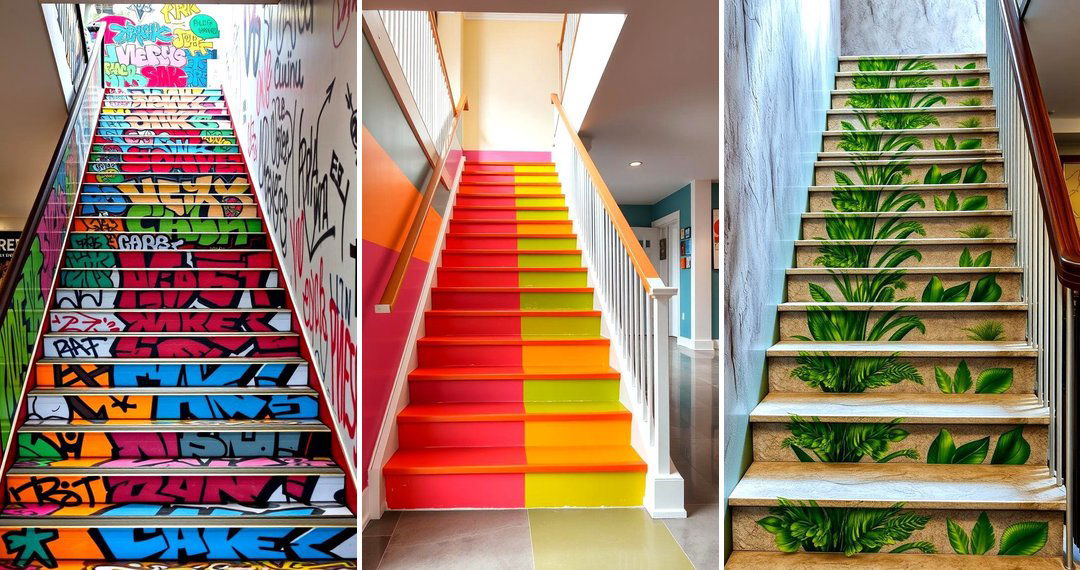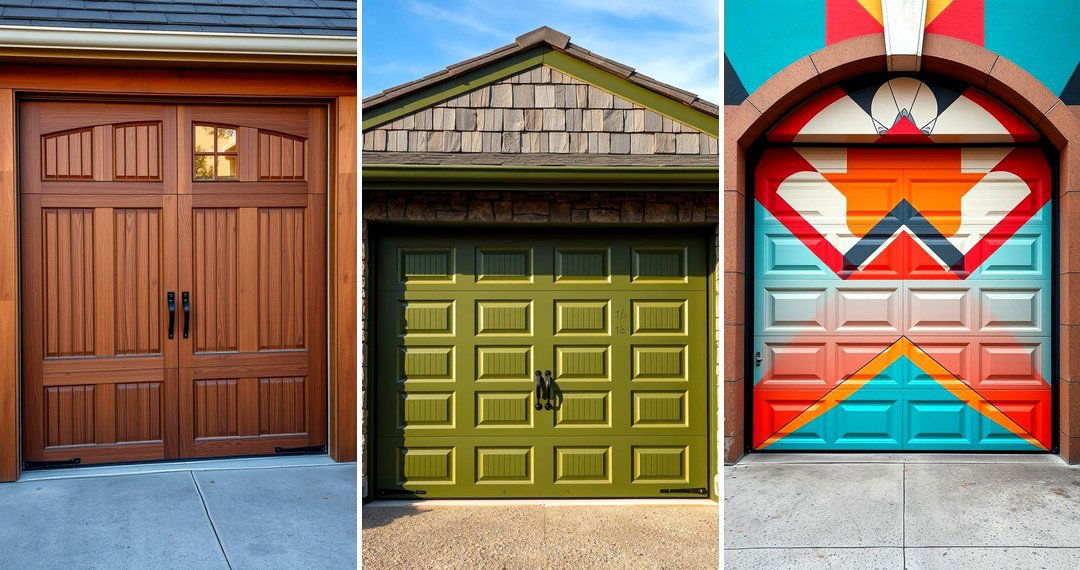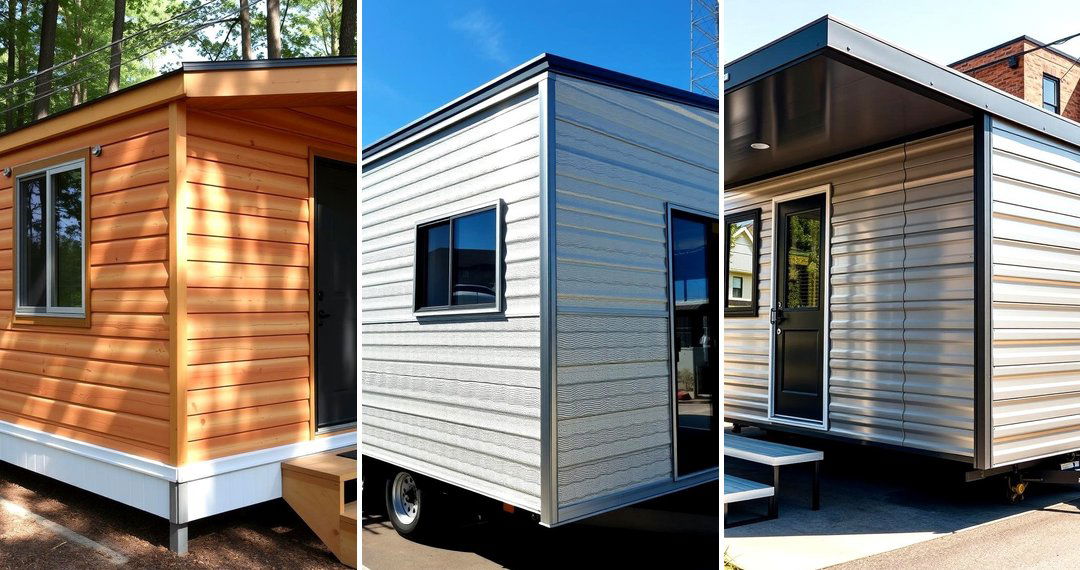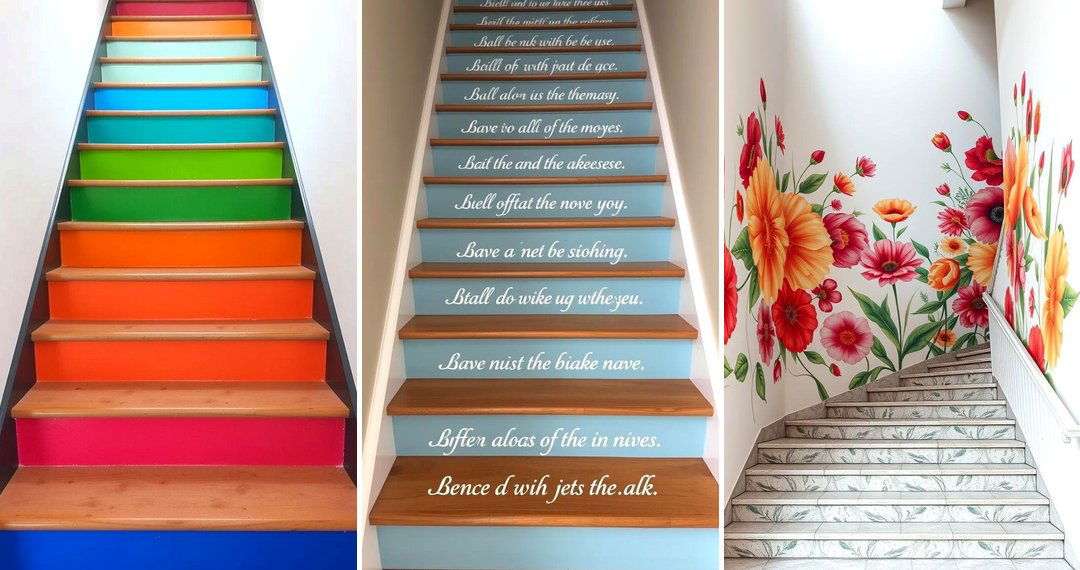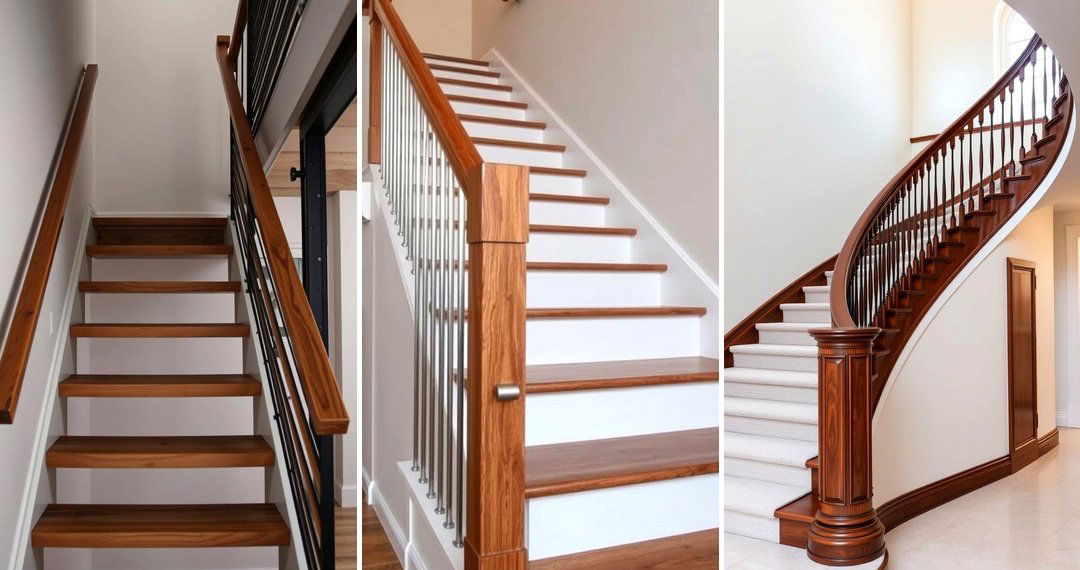Wooden staircases stand as timeless architectural features, seamlessly blending functionality with aesthetic appeal. They serve not just as a means of traversing different levels within a home but also as significant design elements that can define the character and style of an interior space. The warmth and natural beauty of wood offer a versatility that complements a wide range of décor, from rustic and traditional to modern and minimalist. Investing in a well-designed wooden staircase can significantly enhance the overall ambiance and value of a property. Whether you are renovating an existing home or designing a new one, exploring the myriad possibilities in wooden staircase designs can unlock the potential for a truly exceptional and inviting living environment. Let's explore some inspiring 24 Wooden Staircase Ideas that can elevate your home's interior.

1. Classic Oak Straight Staircase
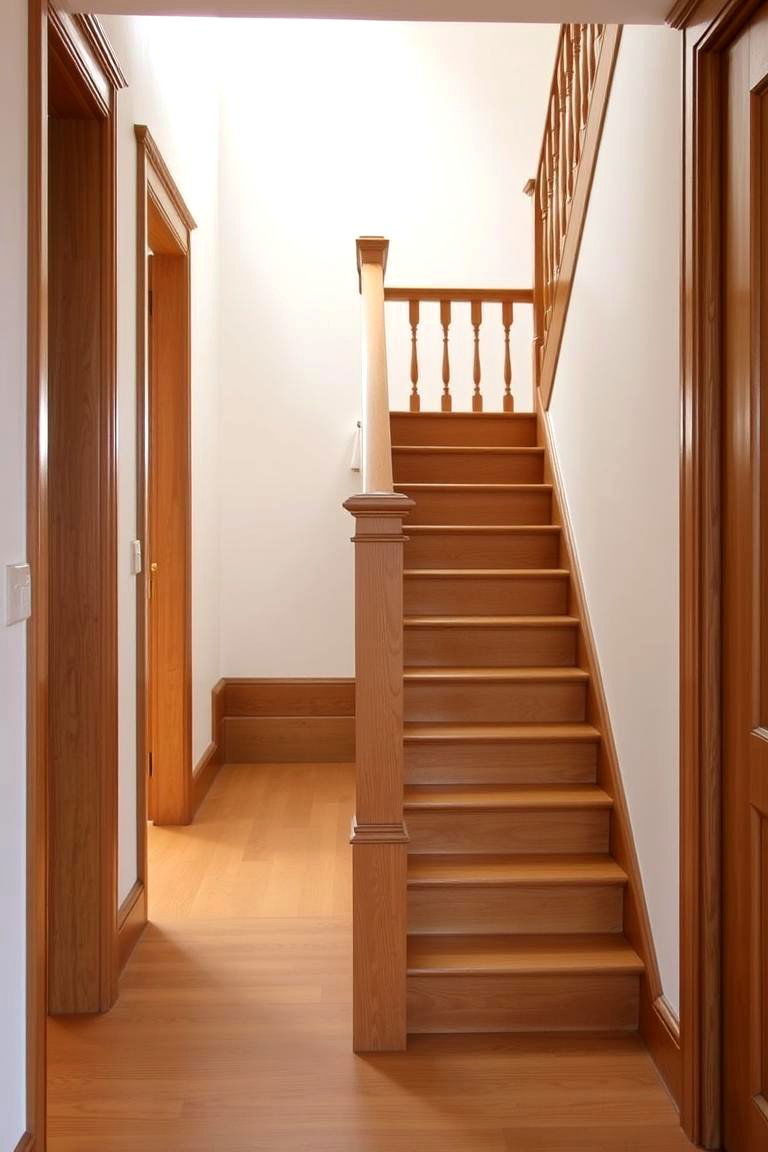
The enduring appeal of a classic oak straight staircase lies in its simplicity and robustness. This design features a single, continuous flight of stairs without any turns or landings, making it a straightforward and efficient solution for connecting two floors. Oak wood, known for its strength and distinctive grain pattern, provides both durability and a touch of natural elegance. The key benefits include ease of installation, a timeless aesthetic that suits various interior styles, and the inherent durability of oak, ensuring longevity. Consider pairing this with simple balusters and a matching handrail for a clean and sophisticated look.
2. Elegant Mahogany Curved Staircase
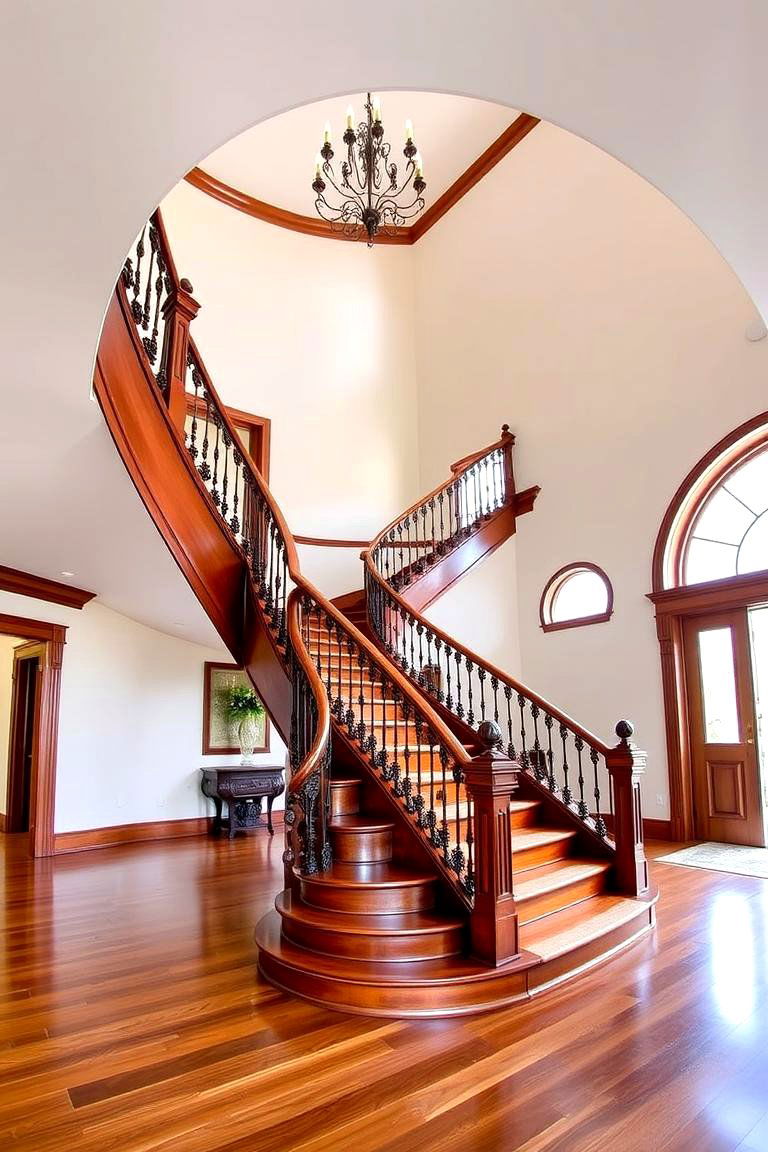
For a touch of grandeur and sophistication, an elegant mahogany curved staircase makes a striking statement. The gentle sweep of the stairs creates a graceful focal point, adding a sense of flow and movement to the space. Mahogany, with its rich reddish-brown hue and fine grain, exudes luxury and warmth. The key benefits of a curved design include its visual impact, its ability to soften the lines of a room, and the inherent elegance associated with mahogany. This style often features ornate details in the balustrades and handrails, further enhancing its opulent feel.
3. Space-Saving Spiral Wooden Staircase

When space is at a premium, a spiral wooden staircase offers an ingenious solution without compromising on style. This design winds around a central pole, occupying a minimal footprint. It's particularly well-suited for smaller homes, apartments, or as a secondary access to an upper level. The key benefits include its compact design, its ability to fit into tight spaces, and its unique architectural appeal. While it might not be ideal for carrying large items, a well-crafted wooden spiral staircase can be a beautiful and functional addition.
4. Rustic Pine Open Riser Staircase
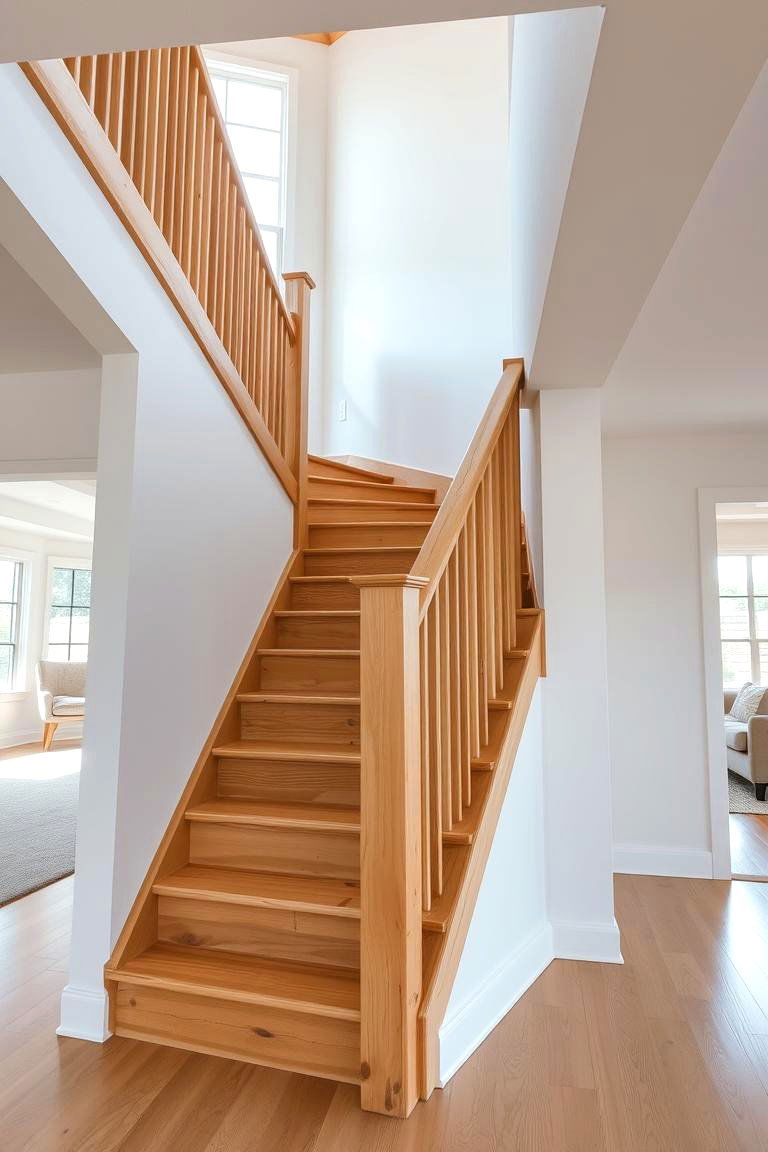
Embracing a natural and airy feel, a rustic pine open riser staircase showcases the beauty of simplicity. The absence of traditional risers (the vertical part between steps) allows light and air to flow freely, creating a more open and spacious ambiance. Pine wood, with its light color and visible knots, lends a warm and inviting rustic charm. Key benefits include enhanced light penetration, a sense of spaciousness, and the natural, unpretentious appeal of pine. Consider a clear or matte finish to protect the wood while retaining its natural character.
5. Modern Walnut Floating Staircase

For a sleek and contemporary look, a modern walnut floating staircase is a stunning choice. This design gives the illusion that the treads are suspended in mid-air, often achieved by securing them to a hidden stringer within the wall. Walnut wood, with its rich dark color and smooth grain, adds a touch of understated luxury. The key benefits include its minimalist aesthetic, its space-saving design (as the area underneath is often left open), and the sophisticated appeal of walnut. This style often features glass or metal balustrades for a clean and unobstructed view.
6. Farmhouse-Style Painted Wooden Staircase
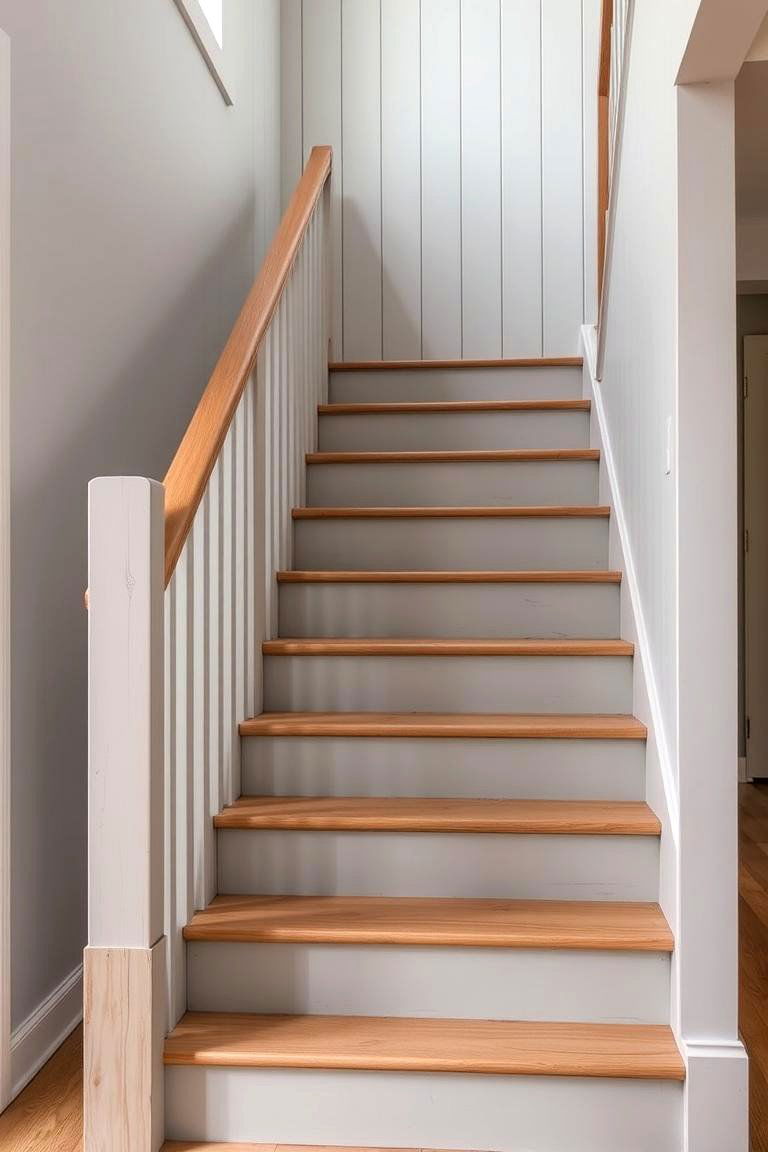
Bringing a touch of country charm, a farmhouse-style painted wooden staircase can be both practical and visually appealing. Opting for a painted finish allows for customization with colors that complement your décor, while the underlying wood provides warmth and texture. Key benefits include its versatility in matching various color schemes, its ability to brighten a space, and the potential for adding decorative elements like painted patterns or distressed finishes. Consider using a durable paint that can withstand daily use.
7. Craftsman-Inspired Oak Staircase with Details

Drawing inspiration from the Arts and Crafts movement, a craftsman-inspired oak staircase emphasizes quality craftsmanship and natural materials. This design often features solid oak construction with intricate details such as square balusters, sturdy newel posts, and decorative brackets. The key benefits include its robust construction, its timeless and handcrafted aesthetic, and the inherent beauty of oak wood enhanced by thoughtful detailing. This style exudes a sense of tradition and enduring quality.
8. Minimalist Maple Staircase with Glass Balustrades
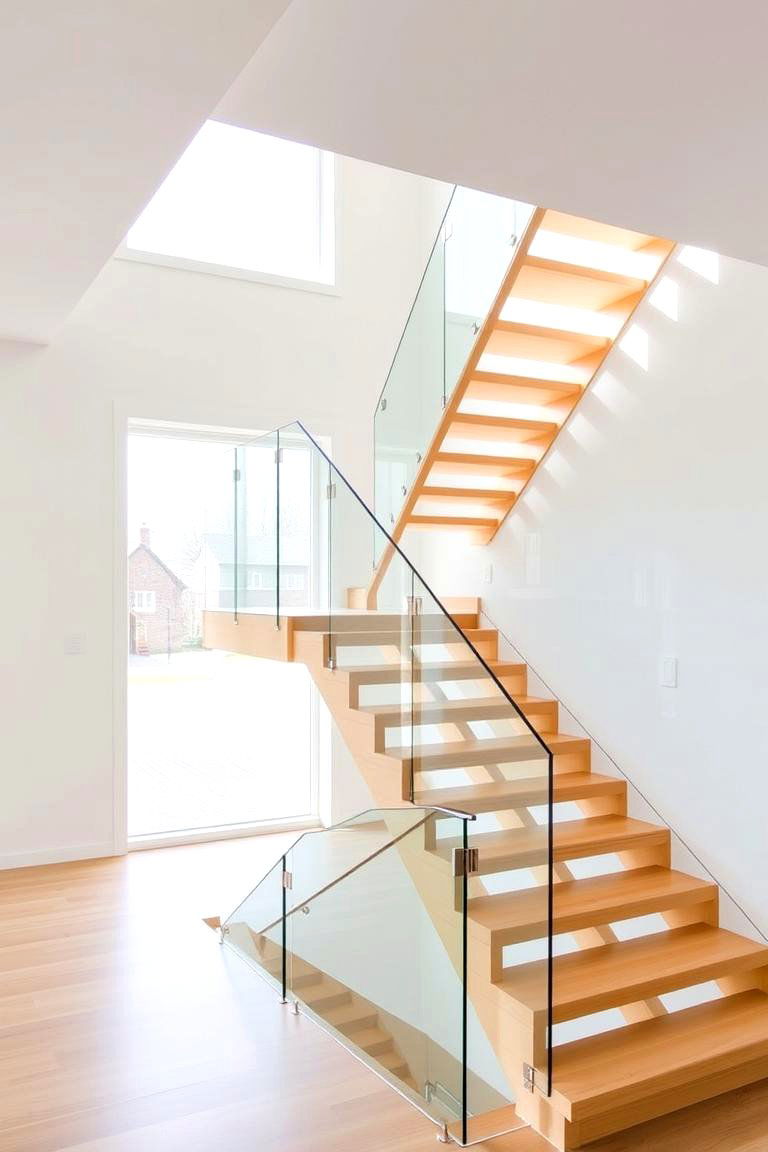
Focusing on clean lines and simplicity, a minimalist maple staircase with glass balustrades offers a light and airy feel. Maple wood, known for its light color and smooth grain, provides a neutral and elegant base. The use of glass balustrades further enhances the sense of openness and allows for unobstructed views. Key benefits include its bright and airy aesthetic, its minimalist appeal that suits contemporary spaces, and the safety provided by the glass without sacrificing visual clarity.
9. Industrial-Chic Wooden Staircase with Metal Accents

Blending the warmth of wood with the raw appeal of metal, an industrial-chic wooden staircase creates a unique and stylish statement. This design often features wooden treads paired with metal stringers, railings, or balusters. The contrast between the materials adds visual interest and a touch of urban edge. Key benefits include its durability, its unique aesthetic that combines natural and industrial elements, and the potential for incorporating reclaimed wood for added character.
10. Mid-Century Modern Teak Staircase with Angled Supports

Evoking the iconic design era, a mid-century modern teak staircase with angled supports showcases clean lines and organic forms. Teak wood, prized for its rich golden-brown color and durability, adds a touch of luxury. The angled supports provide structural integrity while also contributing to the distinctive aesthetic of the period. Key benefits include its stylish and retro appeal, the durability and beauty of teak, and the unique architectural detail of the angled supports.
11. Coastal-Inspired Light Wood Staircase with Rope Railing
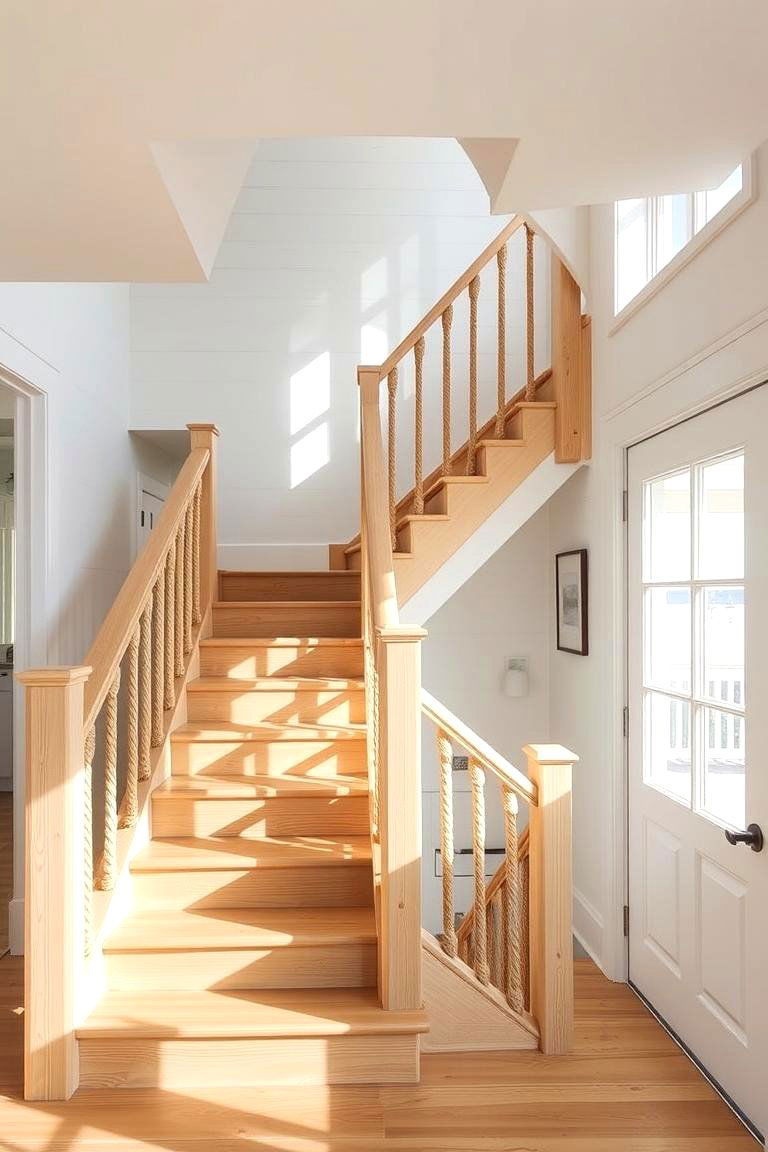
Bringing a relaxed and airy vibe, a coastal-inspired light wood staircase with a rope railing is perfect for beach houses or homes with a nautical theme. Light-colored wood such as birch or ash creates a bright and breezy feel, while the rope railing adds a touch of maritime charm. Key benefits include its light and airy aesthetic, its unique and thematic design element of the rope railing, and the natural and inviting feel of light wood.
12. Scandinavian-Style Beech Staircase with Simple Lines

Emphasizing functionality and understated elegance, a Scandinavian-style beech staircase with simple lines is a perfect fit for minimalist interiors. Beech wood, known for its light color and fine grain, offers a clean and natural look. The design typically features clean, straight lines and a lack of ornamentation. Key benefits include its minimalist aesthetic, its bright and airy feel, and the durable and smooth nature of beech wood.
13. Traditional Mahogany Staircase with Turned Balusters

For a timeless and classic look, a traditional mahogany staircase with turned balusters exudes elegance and formality. Mahogany wood, with its rich color and fine grain, provides a luxurious foundation. The turned balusters add a touch of intricate detail and traditional charm. Key benefits include its classic and elegant aesthetic, the inherent beauty of mahogany, and the added visual interest of the turned balusters.
14. Contemporary Oak Staircase with a Central Stringer
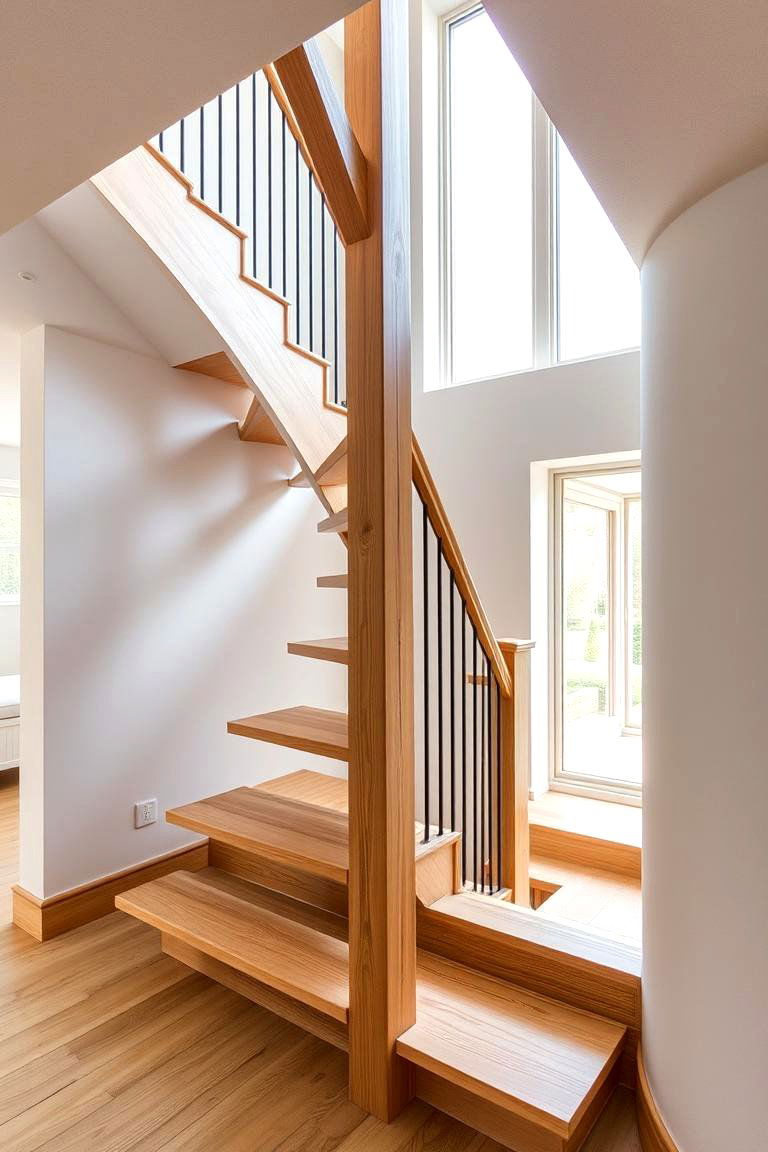
Showcasing a modern and streamlined design, a contemporary oak staircase with a central stringer offers a clean and open look. The treads are typically supported by a single beam running down the center, creating a visually light and airy structure. Oak wood provides durability and a natural warmth. Key benefits include its modern and minimalist aesthetic, its space-saving design due to the central support, and the inherent strength and beauty of oak.
15. Rustic Log Staircase with Hand-Carved Details

For a truly unique and nature-inspired look, a rustic log staircase with hand-carved details brings the outdoors in. This design often features thick, unfinished wooden logs for the treads and supports, with hand-carved details adding a touch of artistry and character. Key benefits include its unique and natural aesthetic, its robust and durable construction, and the personalized touch of hand-carved elements.
16. Elegant Cherry Wood Staircase with Intricate Inlays
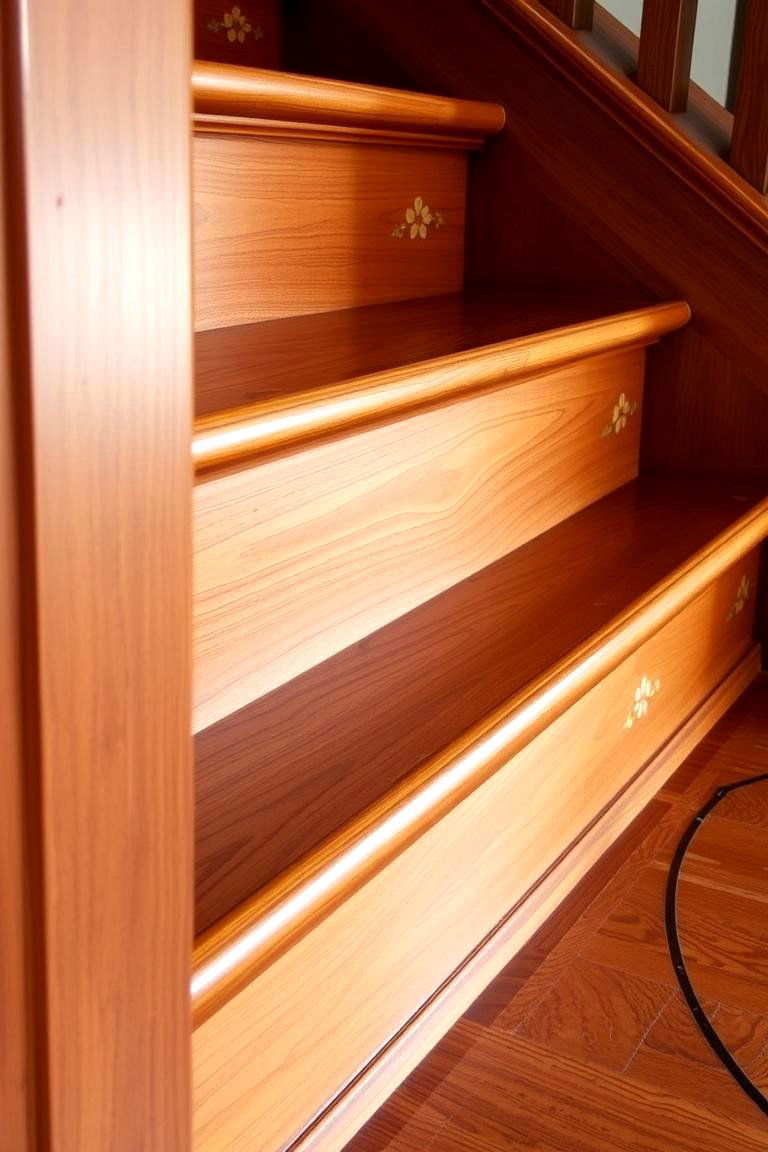
Adding a touch of refined luxury, an elegant cherry wood staircase with intricate inlays showcases exquisite craftsmanship. Cherry wood, known for its rich reddish-brown hue and smooth grain, provides a beautiful base for detailed inlay work using contrasting woods or materials. Key benefits include its luxurious and elegant aesthetic, the inherent beauty of cherry wood, and the added visual interest and artistry of the inlays.
17. Space-Optimizing Cantilevered Wooden Staircase
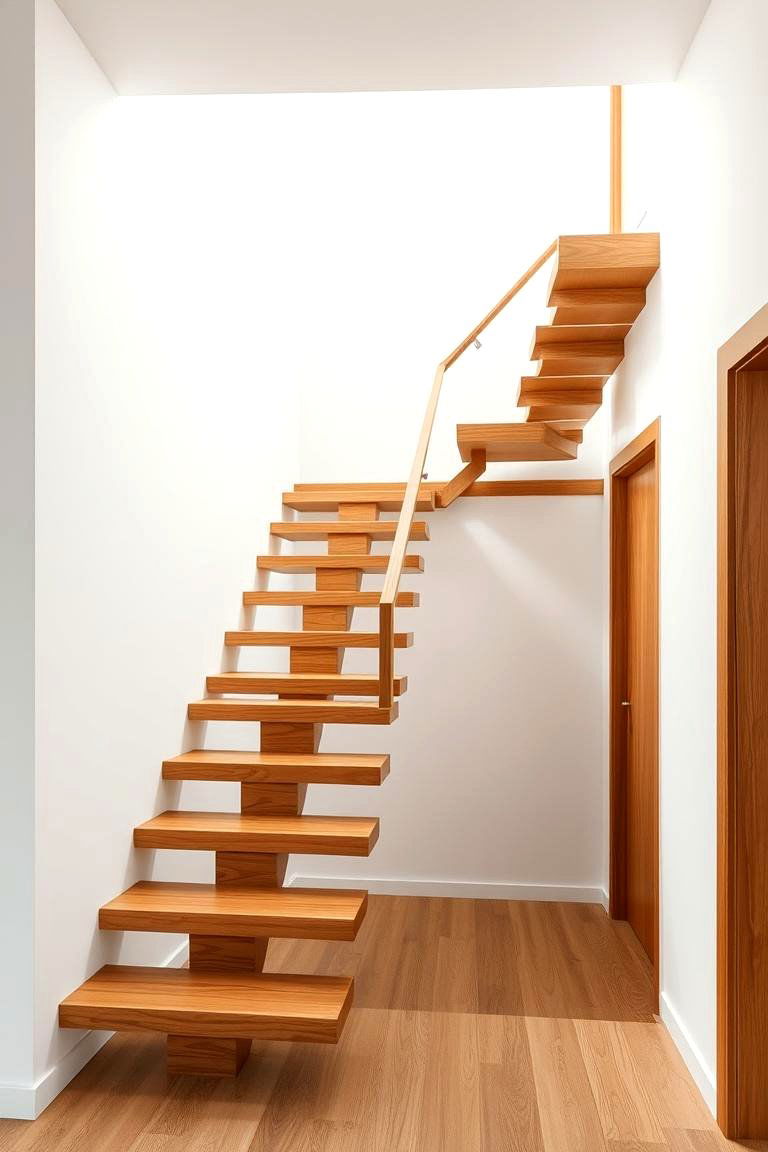
Maximizing usable space, a space-optimizing cantilevered wooden staircase extends the treads outward from the wall without visible supports on the other side. This design creates a modern and visually striking effect while freeing up the area beneath the stairs. Key benefits include its space-saving design, its modern and minimalist aesthetic, and the illusion of floating treads.
18. Farmhouse-Chic Reclaimed Wood Staircase
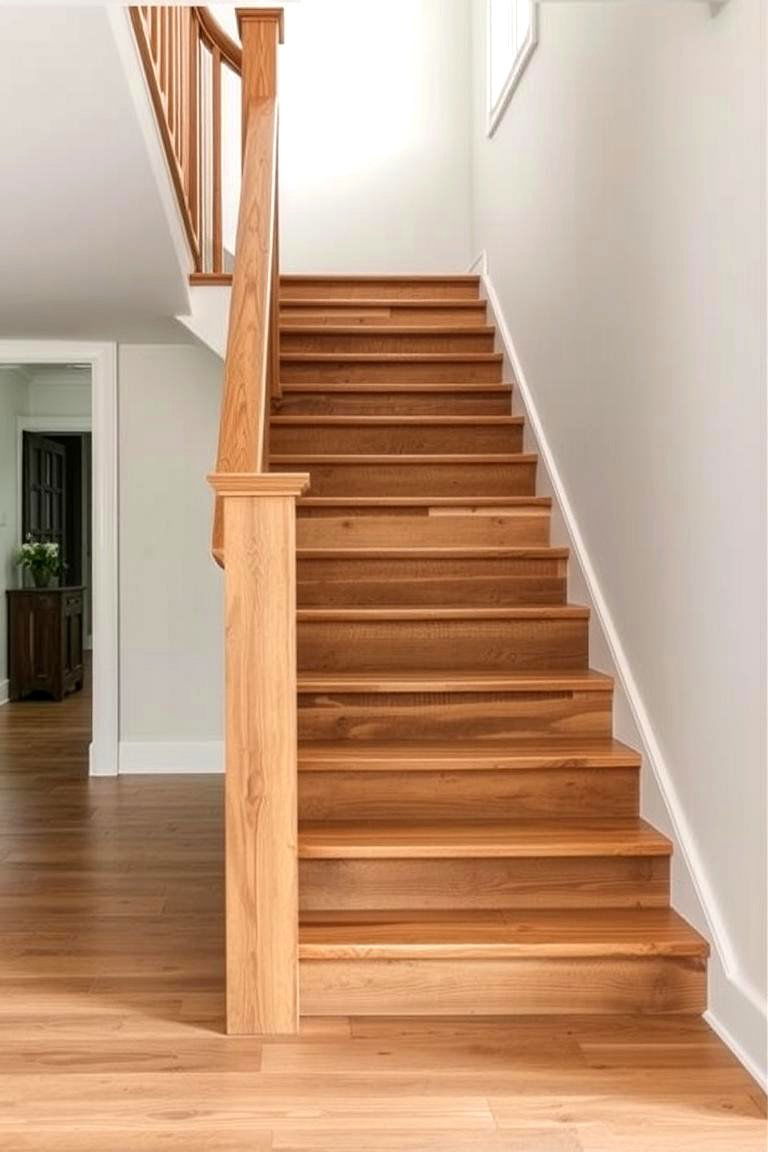
Embracing sustainability and character, a farmhouse-chic reclaimed wood staircase utilizes salvaged wood with a history, adding a unique and rustic charm to your home. The imperfections and variations in reclaimed wood tell a story and contribute to a warm and inviting atmosphere. Key benefits include its eco-friendly nature, its unique and characterful aesthetic, and the sense of history and warmth it brings to a space.
19. Modern Bamboo Staircase with Sleek Design

For an eco-friendly and stylish option, a modern bamboo staircase with a sleek design offers a sustainable alternative to traditional hardwoods. Bamboo is known for its strength, durability, and rapid renewability. Its light color and fine grain create a clean and contemporary look. Key benefits include its sustainability, its modern and sleek aesthetic, and the strength and durability of bamboo.
20. Traditional Walnut Winder Staircase
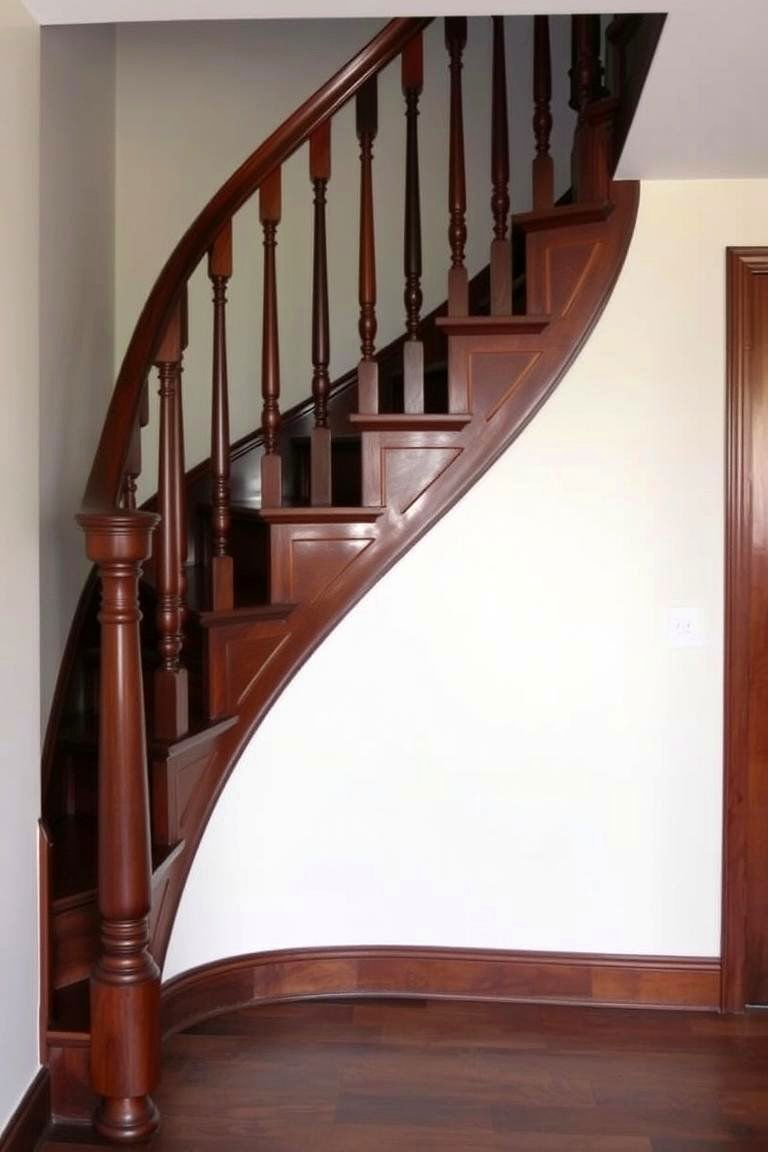
Fitting neatly into corners and tight spaces, a traditional walnut winder staircase features steps that are wider on the outside than the inside, gradually changing direction without a landing. Walnut wood adds a touch of elegance and sophistication. Key benefits include its space-saving design, its ability to navigate corners smoothly, and the rich and luxurious appeal of walnut.
21. Contemporary Light Ash Staircase with Open Stringers
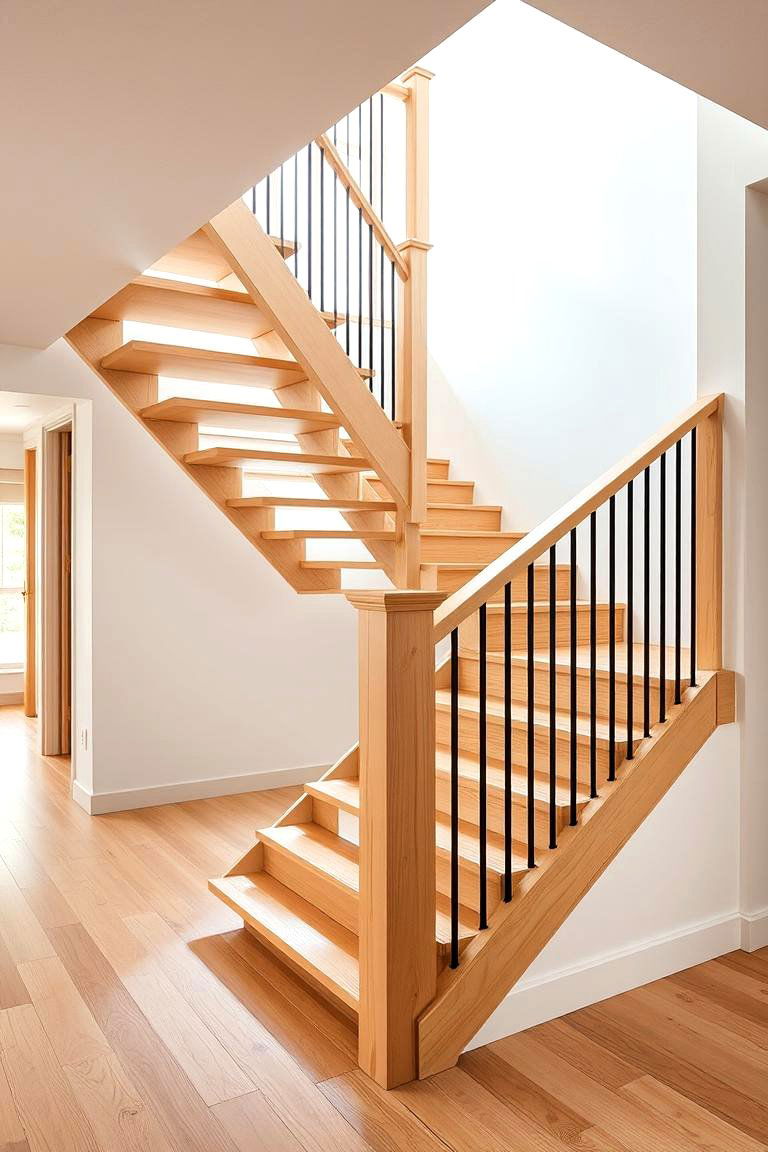
Showcasing a light and airy design, a contemporary light ash staircase with open stringers highlights the structural elements of the staircase. The open stringers allow light to pass through, creating a sense of spaciousness. Ash wood, with its light color and prominent grain, adds a natural touch. Key benefits include its bright and airy aesthetic, its modern design that emphasizes structural elements, and the natural beauty of ash wood.
22. Rustic Cedar Staircase with Natural Bark Accents
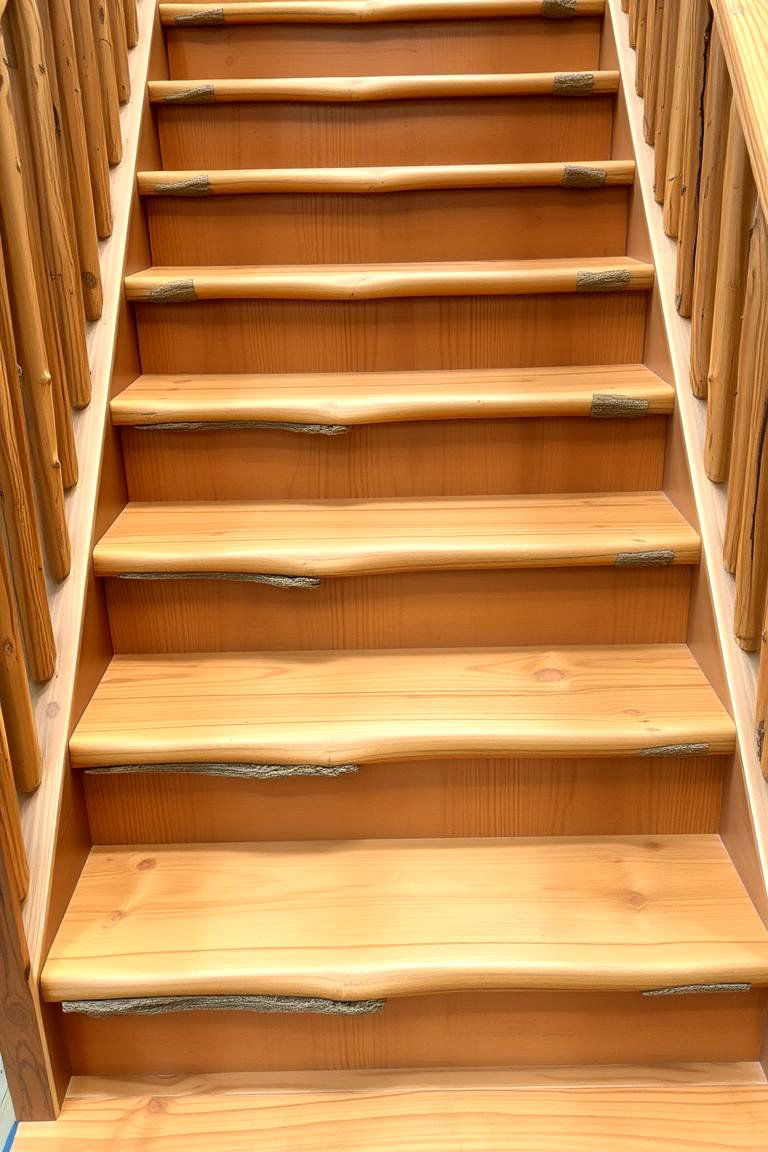
Bringing a touch of nature's raw beauty indoors, a rustic cedar staircase with natural bark accents offers a unique and organic look. Cedar wood is known for its warm color, aromatic scent, and natural resistance to decay. Incorporating bark accents adds a distinctive and rustic touch. Key benefits include its unique and natural aesthetic, the aromatic properties of cedar, and its inherent durability.
23. Elegant Maple Staircase with Decorative Metal Inserts
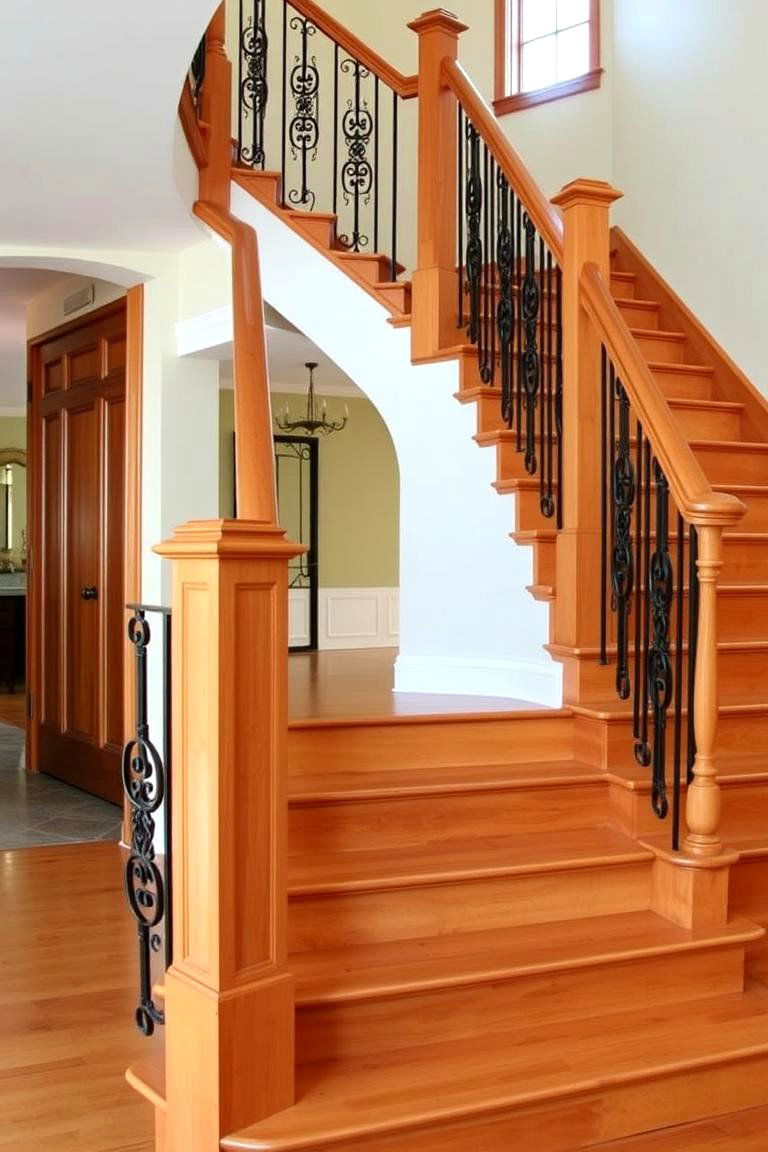
Combining the warmth of wood with the sophistication of metal, an elegant maple staircase with decorative metal inserts adds a touch of artistry and visual interest. Maple wood provides a light and smooth base, while the metal inserts in the balusters or risers create a unique and stylish detail. Key benefits include its elegant and refined aesthetic, the contrast and visual interest created by the metal inserts, and the smooth and durable nature of maple.
24. Space-Saving Folding Wooden Attic Staircase

For occasional access to an attic or loft, a space-saving folding wooden attic staircase offers a practical and discreet solution. This type of staircase folds up and out of sight when not in use, maximizing floor space in the room below. Key benefits include its space-saving design, its practicality for accessing infrequently used spaces, and its ability to blend seamlessly into the ceiling when closed.
Conclusion:
The world of wooden staircase design offers a vast array of options to enhance the beauty and functionality of any home. From the timeless elegance of oak and mahogany to the modern simplicity of maple and walnut, each material and design brings its own unique character and benefits. Whether you prioritize space-saving solutions like spiral or folding staircases, or desire a grand statement piece with curved designs and intricate details, the right wooden staircase can transform your interior. Considering factors like your home's architectural style, your personal preferences, and your practical needs will guide you in selecting the perfect wooden staircase to elevate your living space.


